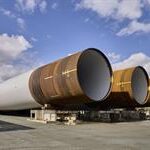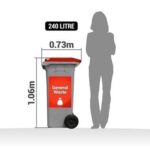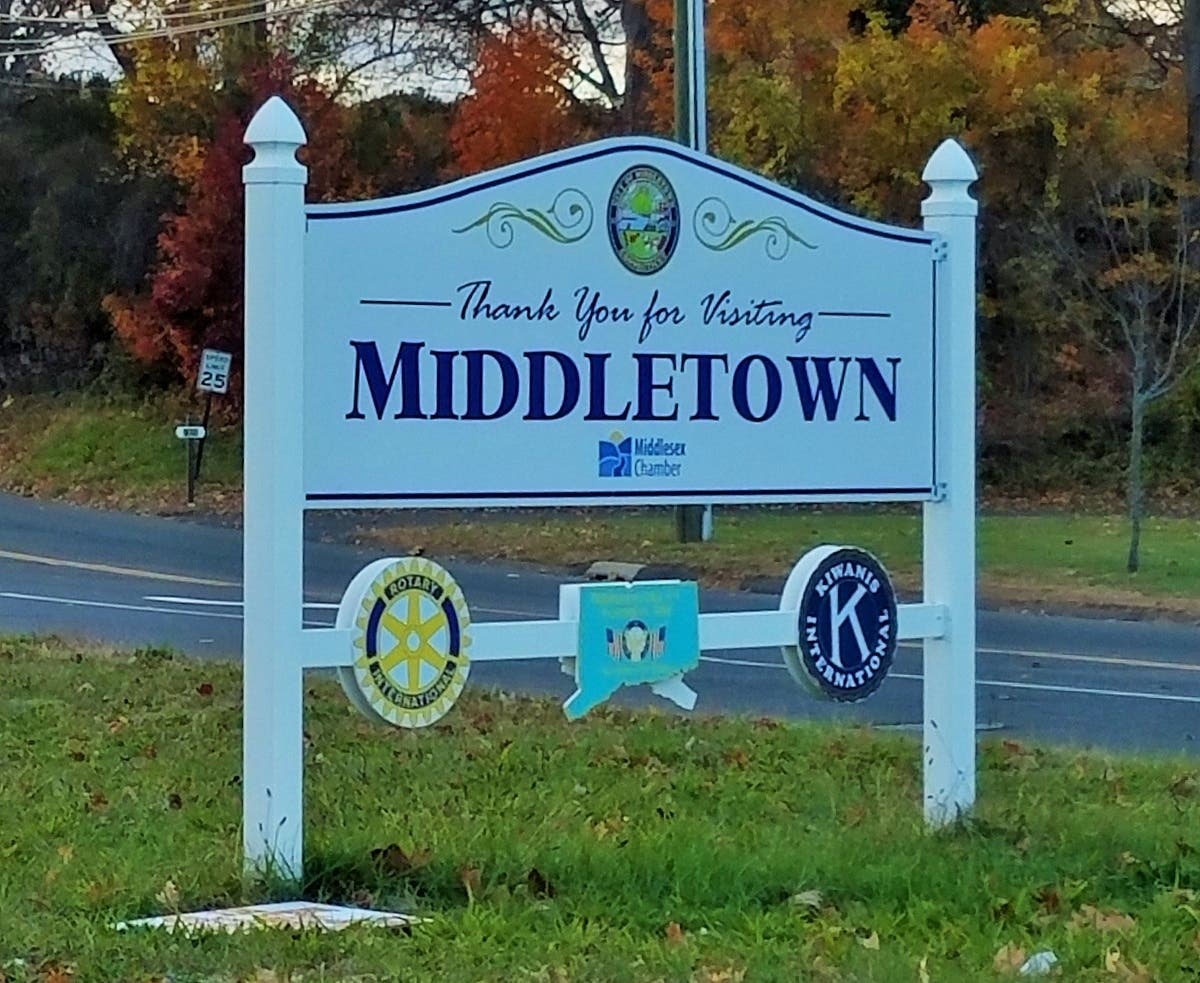[Article] How to Future-Proof a Museum Collection
Energy Disrupter
Larry Weingarten, longtime friend and contributor to Home Energy magazine, recently moved his Water Heater Museum from his home in Salinas, California, to a very special place on the East Coast. The museum had enjoyed some public attention at his home and had also appeared in small expos, including one at the Monterey Airport. In August 2019, the museum moved to the General Society of Mechanics and Tradesmen of the City of New York in midtown Manhattan. After kicking around ideas to tour the museum cross-country with hot water expert Gary Klein in a hot-water road show, Larry decided to pack it all into a container, meet the truck in New York, and assemble the museum in its new home just in time for Wetstock, a periodic meeting of hydronic-heating enthusiasts, held this year at the General Society.
Founded in 1785, the General Society of Mechanics and Tradesmen aims to improve lives by providing culture, education, and training in design and building. In 1858, it opened a trade school called the Mechanics Institute, as well as the General Society Library and the Artisan Lecture Series, all of which are still thriving today. The tuition-free school graduates only 300 students per year.

Erin Holohan and Larry Weingarten. (Erin Holohan)
I sat down recently with Larry to hear how the move of the museum went.
Leslie Jackson: You and I first met in 2008, when you gave ACEEE Summer Study participants a tour of the museum at your home. How did the Water Heater Museum start?
Larry Weingarten: As you know, I’m kind of a water heater fanatic. I have collected books, product manuals, and magazine articles—anything that I could find in print about hot water. And for that, I found out there were very different ways of heating water that I hadn’t seen.
Bath heaters, for example, are point-of-use heaters that sit right next to the edge of the bathtub, and heat water that pours out of a spout directly into your tub. The neat thing is that some of these actually mix flames and water together, turning them into condensing water heaters or roughly 90% efficient water heaters. I have one that’s now 124 years old.
So that made me think there’s some technology here we should be looking at. There are lots of ideas in these things.
I had been on the lookout for a bath heater for about ten years and had never seen one, and then was walking in England—in the city of Bath—and there was a bath heater, sitting on the sidewalk in front of an antique store. And I brought it home, fixed it all back up, and got it to work, and that was the beginning of my collecting heaters.
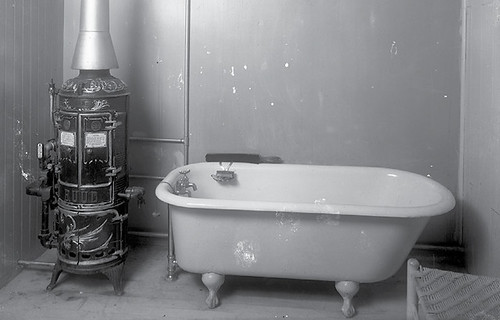 A bath heater in use, circa 1910. (Courtesy of J. C. Knowles Photograph Collection, State Archives of North Carolina)
A bath heater in use, circa 1910. (Courtesy of J. C. Knowles Photograph Collection, State Archives of North Carolina)
I had been on the lookout for a bath heater for about ten years and had never seen one, and then was walking in England—in the city of Bath—and there was a bath heater, sitting on the sidewalk in front of an antique store.
LJ: When did you make your heater collection public?
LW: I actually used to live in Del Rey Oaks, a little town next to Monterey, and I had been putting the heaters into my garage there. Some people would come by and look, but when I built my house—finished in 2006—I decided to build a separate room for the collection, and that’s where it lived from then on. But what kicked it off was I knew a gal named Eileen Tuttle who put on a number of exhibits at the Monterey Airport called Art at the Airport, and she learned about my collection and asked if we could put them up there. We did a lot of work to polish up old heaters and make them pretty, and she had signage made, and so on.
LJ: There is a poster behind you on the wall in one of the museum images of you and your wife, Suzanne, posing in American Gothic style with a pitchfork made of anode rods. That story begs telling!
LW: Actually that photo happened because we were writing an article for Home Energy magazine back in [May/June] 1996 and we thought a photo from our local dump could add a bit of interest to the article. Creating the shot was some work, with stacking up the dead heaters to mimic a roofline and getting the light just right . . . it took two days!
There were a lot of long-lived older heaters that finally died and wound up at the dump, so sometimes I would see heaters from the ’40s there. Old stuff. I’d get out my long snippers and cut off the tag. And maybe unscrew the control if there was one I didn’t have. For this proposed cover photo, I thought, “Well how close can we get to American Gothic?” My wife, Suzanne, studied art, and I had another friend, John, who restored art for a living, so they knew the painting. He was being finicky about getting the light just right, and I had to spend some time stacking the water heaters to get to a pretend roofline behind us. Tossing a heater over your head is entertaining. Suzanne sewed up the clothes. I took anode rods for the pitchfork, bolted them together, and put a little white-out on the bolt heads to conceal them. All these details came together, and then we prepared to shoot the photo with our water heater background. In Marina, where this was, there is only intermittent sun—a lot of fog there. It really did take parts of two days to make this happen, but finally the sun was right, and John was able to snap the correct shot.

“This guy took me almost three months to fix up. It even has painted toenails. They were designed to be pretty because they were going to live in a kitchen or someplace where they would be seen.”
The people at Home Energy thought it was hilarious. They had some fun with it and sent it back to me as a mock magazine cover with cover blurbs (see photo). I think they felt bad because they didn’t use the photo for the real cover.
LJ: How did the museum come to move cross-country?
LW: I probably am not going to live forever, and I was hoping to find some place where the heaters could be used as a teaching tool. I was talking to a guy that I’ve known about 25 years, Dan Holohan, who used to own and run heatinghelp.com (and who is no stranger to Home Energy). It turned out that he claims to be retired, but in retirement Dan is now the president of the General Society of Mechanics and Tradesmen. So I said, “You collect other things; would you be interested in a collection of old water heaters?” And he pretty much said yes but he had to talk to their executive director, Victoria Dengel. Dan said, “You know, if it comes to live here, I can pretty much guarantee you, the organization’s been around for over 200 years already. So no reason that we couldn’t expect the heaters to be on display for another 200 years.”
That sounded good, and they teach tradesmen. They’ve been doing it forever, and they compete to get in, so they get really good students. This seemed like an ideal place for water heaters to be used as a teaching tool.
And I said, “How much room am I going to have?” It started with a cubby that was tiny, like 4 by 13 feet or something; it was not much room. So I mapped everything out. How am I going to fit water heaters in there? Build shelves so I could put more in. And then they said, ”We could give you the wall next to it as well.” “Ooh this is good,” I thought; then more room for posters and I can line up more heaters under that, so I packed those things. Then I called and said, “I got some books, too, you want books?” And they said, “Okay.” (I didn’t tell them how many books.)
LJ: And you had cataloged everything already.
LW: These are all technical things, so when everything was delivered the books were delivered down to their general library and then they thought about it and they said, “These books really should stay with the heaters. How about this: We’ll get some bookshelves and we’ll put the books on the opposite wall. And you can have the whole room. We’ll put a reading table and chairs in the middle, so people can sit there with these books.”
And then the head of Taco [solar water heater manufacturer], Johnny White, saw this and lit up and said, “I think I should donate the first indirect water heater that we ever made to you.” So basically this thing has taken on a life of its own.
LJ: And a water heater museum was made! How did Dan Holohan end up involved with the General Society?
LW: Dan is a New Yorker, he had his eye on getting in to see that place, and as a hydronics and steam heat expert, he’s the one that gets called in when there are problems. The building is steam heated, but it was really kind of a mess. Dan helped them figure out how to fix it all and make it work, and it’s saving them big dollars every year now.
It’s just another of the amazing old buildings that Dan has been allowed to go sneak around in to help them figure out what their heating was doing. He has lots of stories, and is amazingly good at telling them.
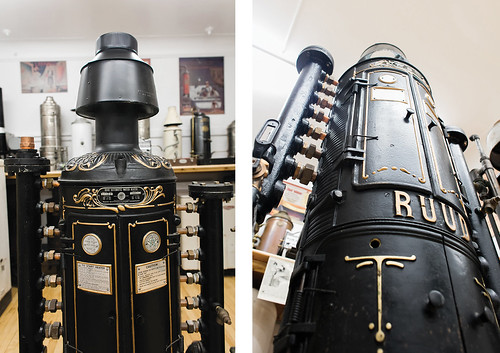 “This guy took me almost three months to fix up. It even has painted toenails. They were designed to be pretty because they were going to live in a kitchen or someplace where they would be seen.” (Erin Holohan)
“This guy took me almost three months to fix up. It even has painted toenails. They were designed to be pretty because they were going to live in a kitchen or someplace where they would be seen.” (Erin Holohan)
LJ: Is your hope for the museum in its new location that people will get tours of it from a knowledgeable person? How will they channel your passion and knowledge to the people visiting there?
LW: Something I did for the Airport Exhibit was to make a half-hour video explaining the heaters and showing them off—even firing some up to show how they work and what they sound like—these are sounds we haven’t heard for a long time. At a minimum, they could have that video playing somewhere. Also, I’ll be making a written description to go with each heater, giving its story and mentioning the things about that heater which demonstrate interesting thinking.
LJ: How did it feel to go back East to unpack the museum, to see it there, and to let go of it?
LW: It’s sort of curious, because they’re like my kids. I never have had kids. Pros and cons. They will now outlive me by hundreds of years. The collection will stay together; it will be a teaching tool. It already is. That’s perfect, I couldn’t hope for a better outcome. But having them leave the nest . . . well, I guess I can better imagine now what it’s like to have your children leave home.
LJ: Mixed feelings . . . ?
LW: Letting go of these books that I have really searched the world for—that was tricky! Most days, there is something that I want to look up that’s in these old files and books, but I thought they would be of more use where they are now.
LJ: Now they are available to you, plus the community of interested folks.
The General Society reminds me of the Mechanics Institute, in San Francisco. It’s in a beautiful, very old building, in the thick of downtown. When you are a member, you get to go to lectures and readings there, and lots of fancy highbrow writers get to go there and work. And similarly, it was intended for mechanics. People who work with their hands.
LW: The word mechanic now makes you envision someone with a wrench. But it was anyone who worked fixing, repairing, and designing buildings. The General Society does a lot of what you are talking about. Talks every week. Fancy folks that have done fun things and the highbrow part is all suit and tie. I don’t know how I’m going to fit in . . .
LJ: I think you’ll be one of the fancy folks that have done fun things.









